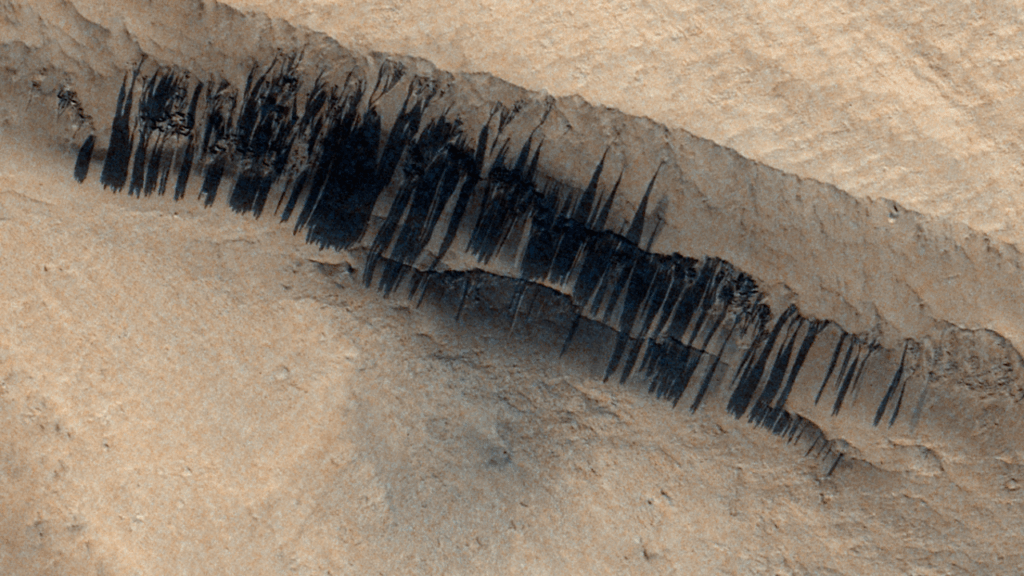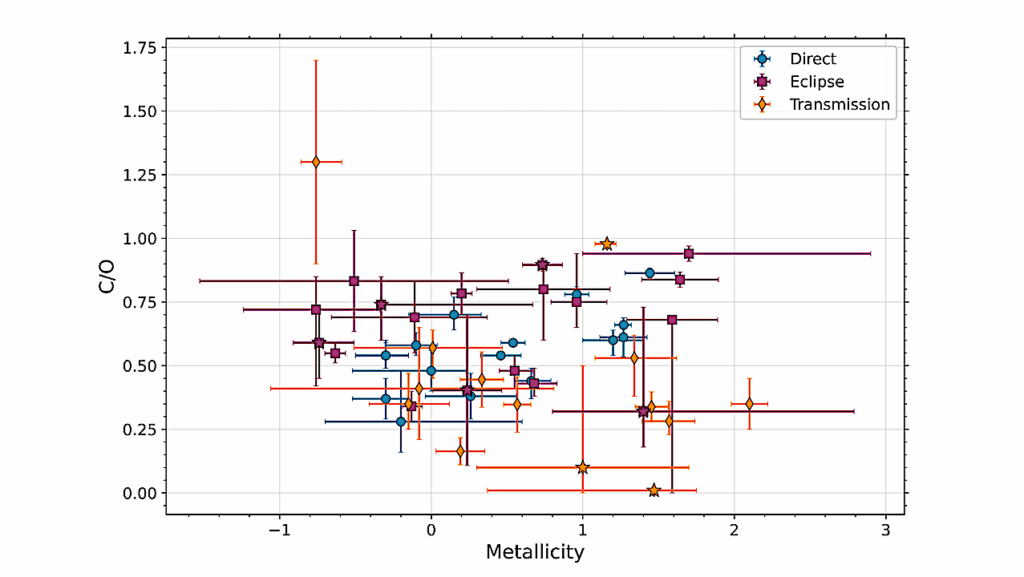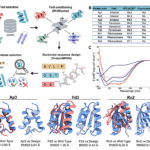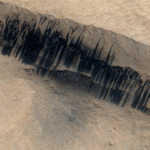Now Reading: Tidally Driven Inertial Waves Enhance Eccentricity Damping And Spin Evolution In Planets And Stars
-
01
Tidally Driven Inertial Waves Enhance Eccentricity Damping And Spin Evolution In Planets And Stars
Tidally Driven Inertial Waves Enhance Eccentricity Damping And Spin Evolution In Planets And Stars

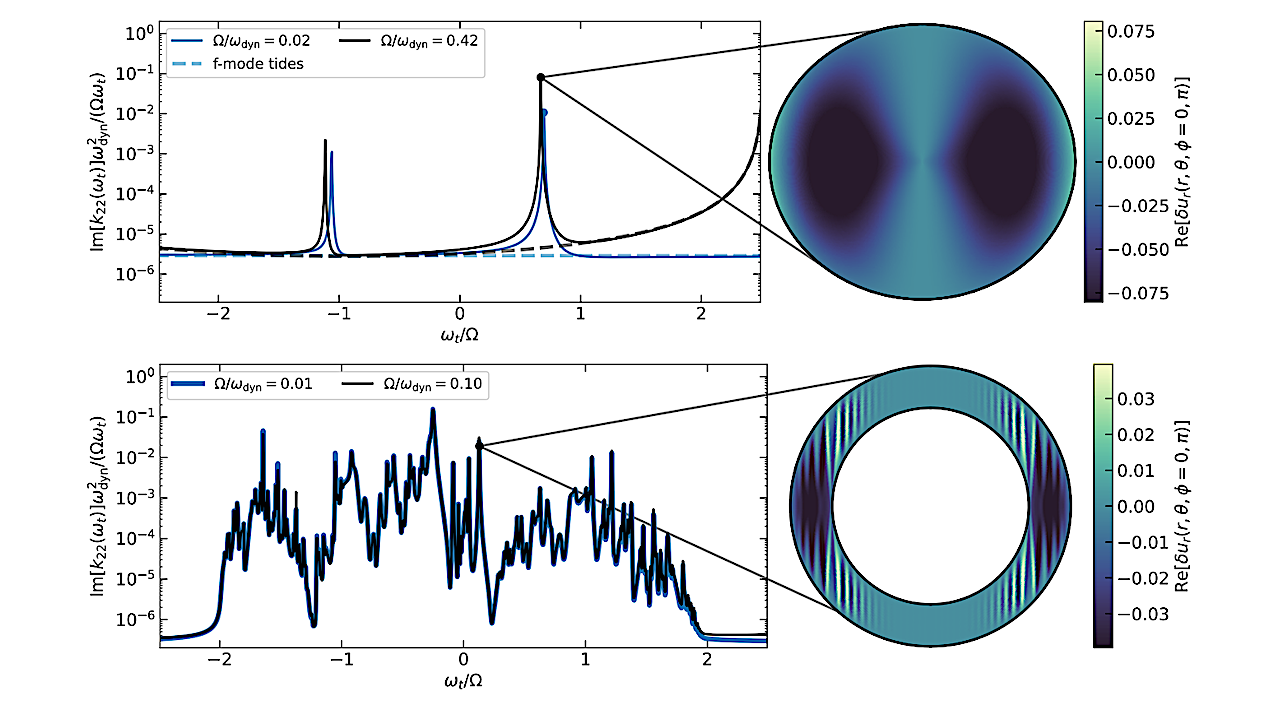
Left: imaginary parts of tidal Love numbers, scaled by (Ω/ωdyn) 2ωt/Ω and plotted as a function of tidal frequency for isentropic polytropes (top) and incompressible shells (bottom) with a constant Ekman number Ek = ν/(R 2Ω) = 10−6 . The different curves show different rotation rates for the tidally perturbed object. The dashed lines in the top panel indicate “f-mode tide” calculations that exclude the inertial oscillations of the polytropic model. Right: meridional slices illustrating the radial velocity perturbation (in units with G = M = R = 1, and normalized by the amplitude of the tidal potential) corresponding to the tidal frequency indicated by the black dots in the lefthand panels. The presence of a central core produces a much more complicated spectrum of resonances in the incompressible shell. — astro-ph.SR
Tidal interactions influence the orbital motions of binary star systems and extrasolar planets alike.
Tides also affect stellar and planetary rotation rates. We demonstrate that in addition to altering spin synchronization and pseudosynchronization, tidally driven inertial waves in the convective envelopes of low-mass stars and gas giant planets can enhance tidal eccentricity damping.
Analytically, we find that eccentricity damping by inertial waves can be orders of magnitude faster than equilibrium tides, independent of any eddy viscosity prescription.
We use simplified numerical experiments to demonstrate this enhancement, and to explore the effects of different mixing length treatments of convective turbulence, as well as a spin-down torque from magnetic braking.
These calculations demonstrate that tidally driven inertial waves can produce an extended cool core of nearly circular binaries, helping to reconcile a longstanding discrepancy between observed and predicted main-sequence binary circularization.
Our calculations additionally suggest that tidally driven inertial waves may leave identifiable signatures in the ratios of orbital to rotation periods for stellar binaries, including synchronous and sub-synchronous rotation periods reminiscent of populations identified in Kepler, TESS, and Gaia data.
Janosz W. Dewberry
Comments: 20 pages, 14 figures, accepted for publication in ApJ (comments welcome)
Subjects: Solar and Stellar Astrophysics (astro-ph.SR); Earth and Planetary Astrophysics (astro-ph.EP)
Cite as: arXiv:2510.25812 [astro-ph.SR] (or arXiv:2510.25812v1 [astro-ph.SR] for this version)
https://doi.org/10.48550/arXiv.2510.25812
Focus to learn more
Submission history
From: Janosz Dewberry
[v1] Wed, 29 Oct 2025 14:03:48 UTC (9,753 KB)
https://arxiv.org/abs/2510.25812
Astrobiology, Astrochemistry, Astrogeology,
Stay Informed With the Latest & Most Important News
Previous Post
Next Post
Previous Post
Next Post
-
 012024 in Review: Highlights from NASA in Silicon Valley
012024 in Review: Highlights from NASA in Silicon Valley -
 02Panasonic Leica Summilux DG 15mm f/1.7 ASPH review
02Panasonic Leica Summilux DG 15mm f/1.7 ASPH review -
 03How New NASA, India Earth Satellite NISAR Will See Earth
03How New NASA, India Earth Satellite NISAR Will See Earth -
 04And Thus Begins A New Year For Life On Earth
04And Thus Begins A New Year For Life On Earth -
 05Astronomy Activation Ambassadors: A New Era
05Astronomy Activation Ambassadors: A New Era -
06SpaceX launch surge helps set new global launch record in 2024
-
 07Space Force plans new ‘Futures Command’ amid pressure to speed up modernization
07Space Force plans new ‘Futures Command’ amid pressure to speed up modernization














